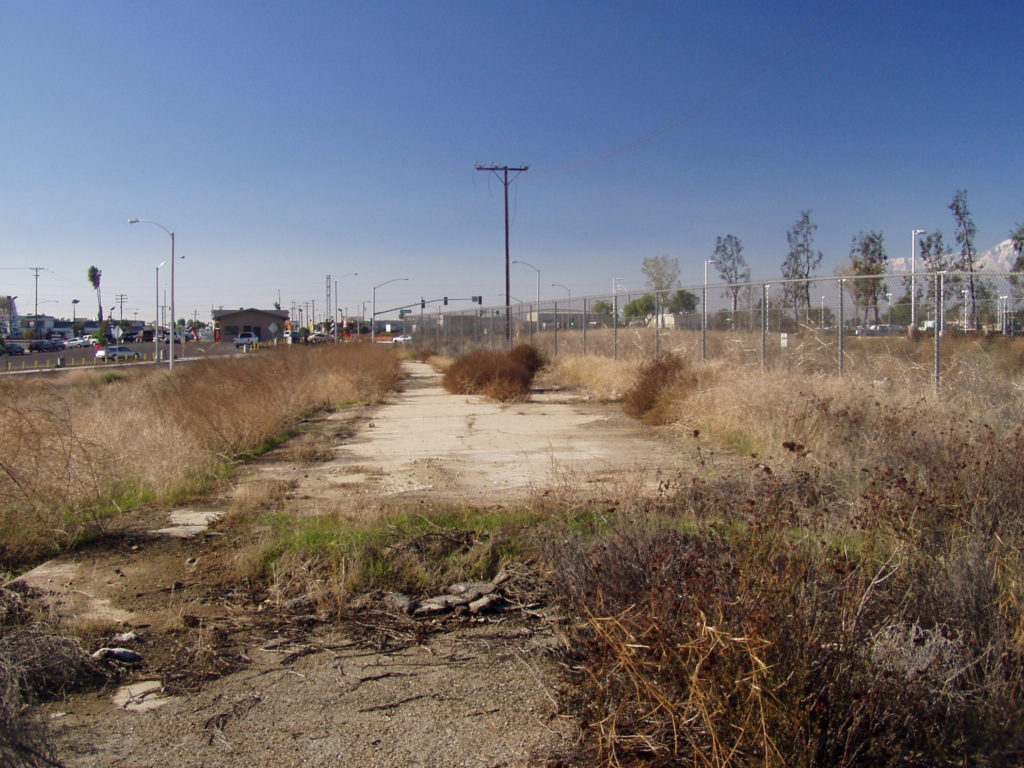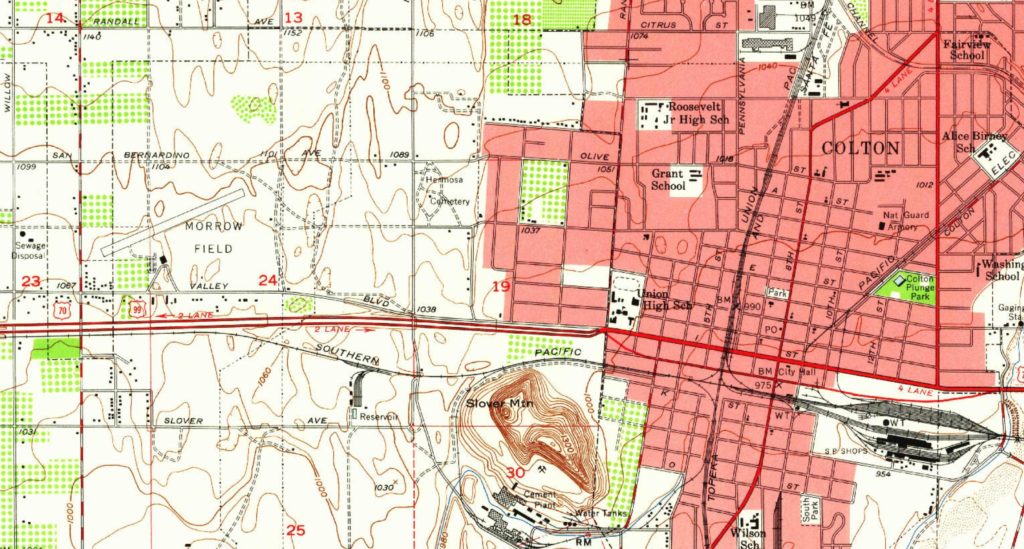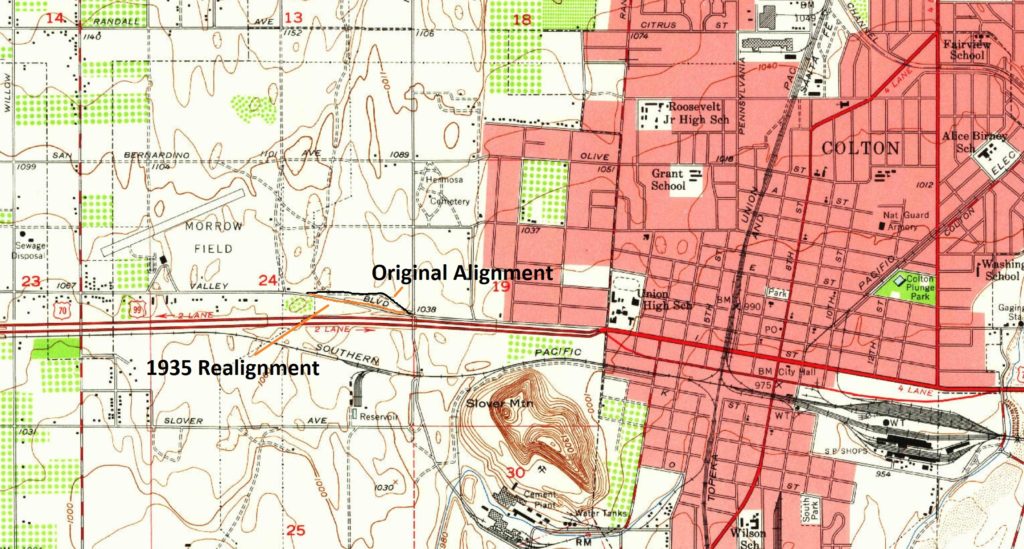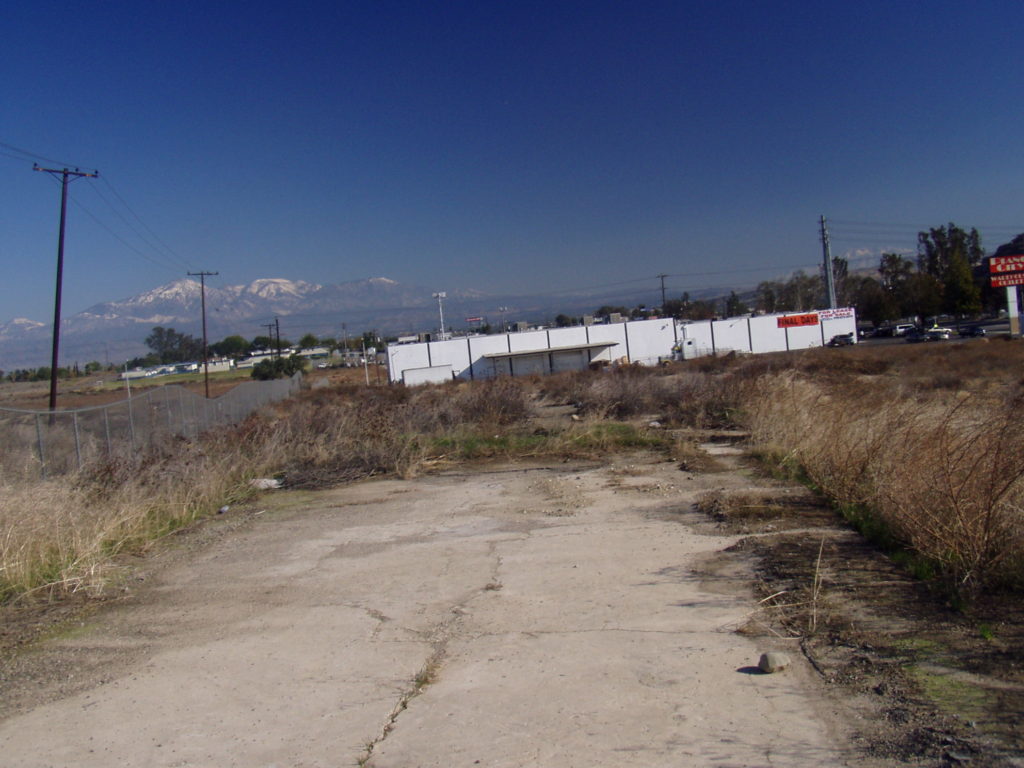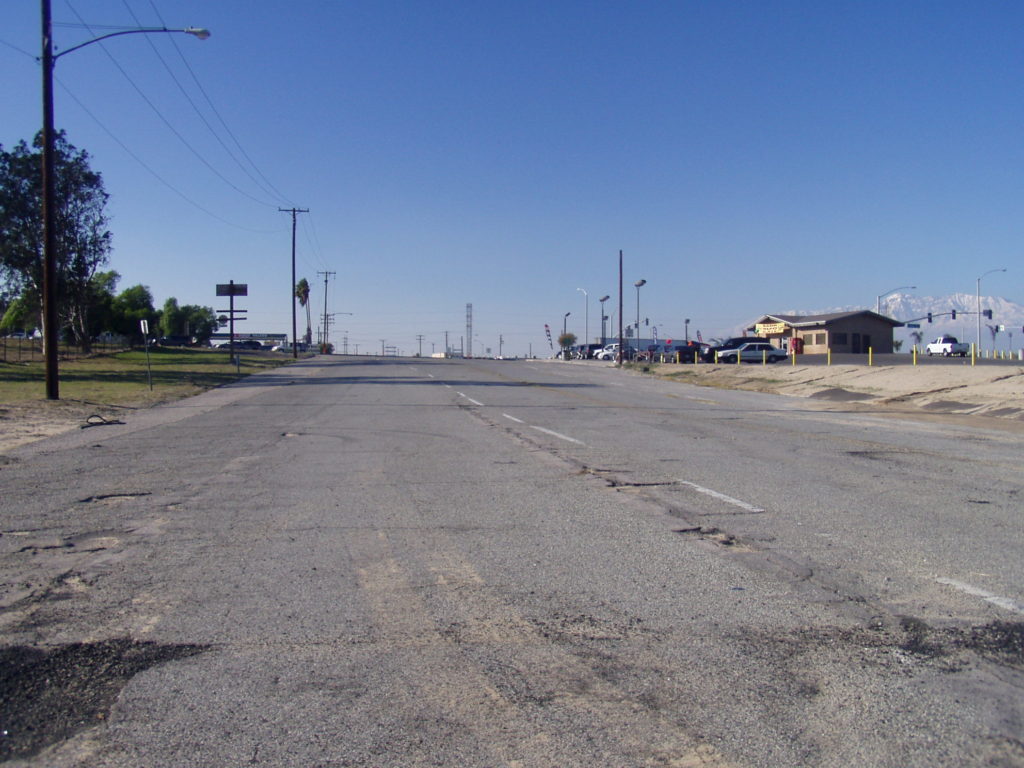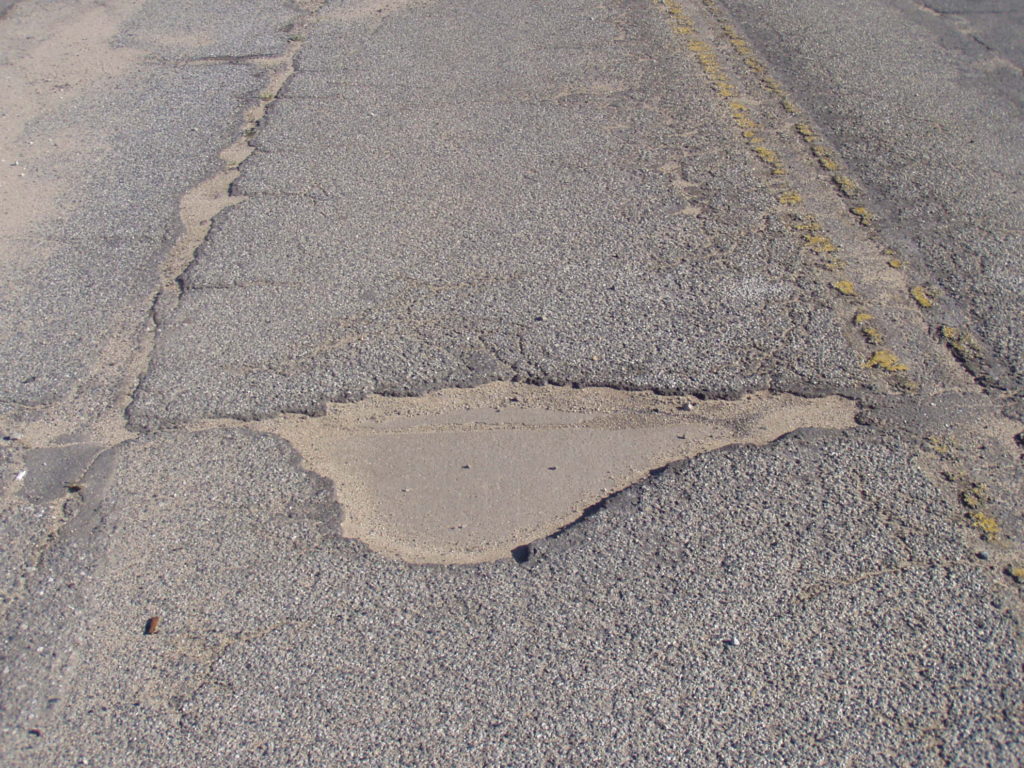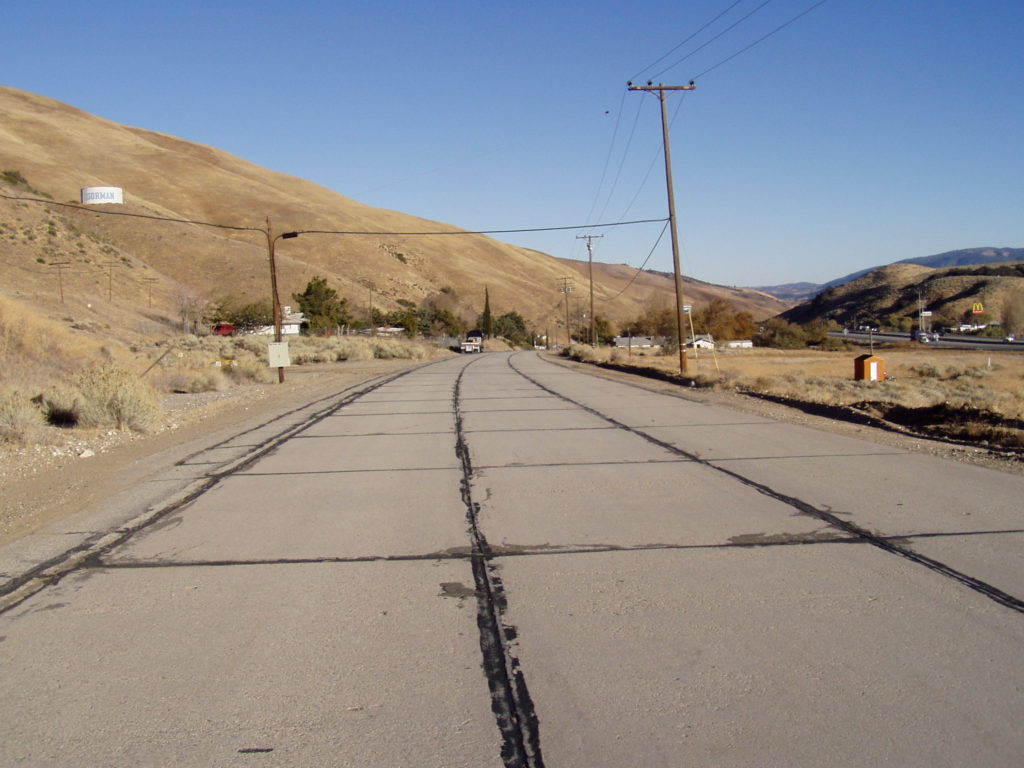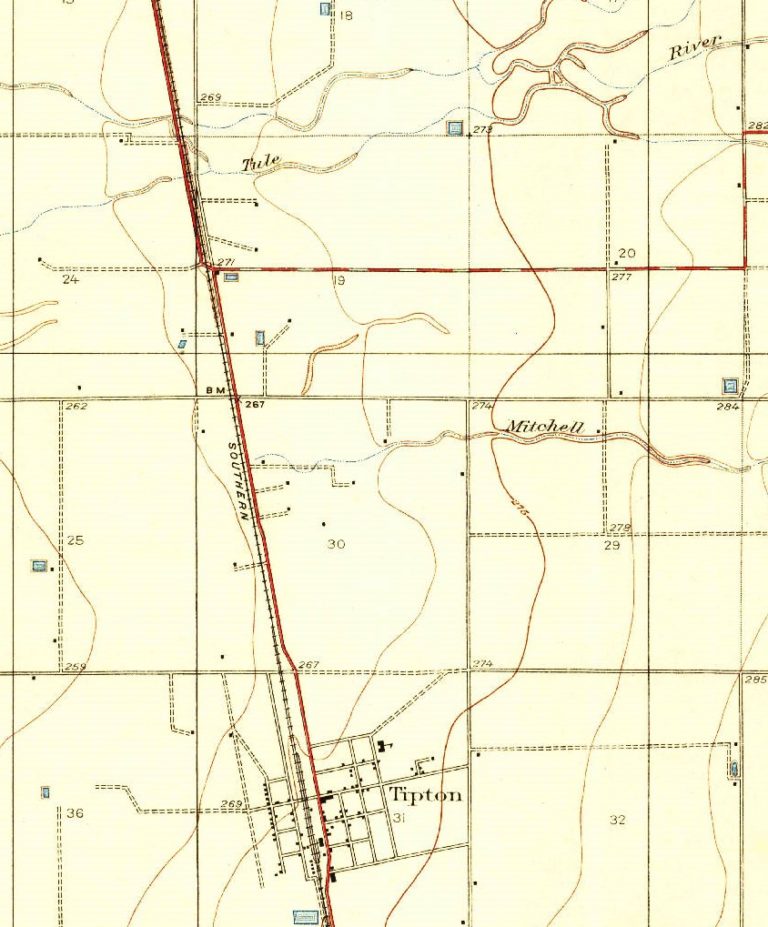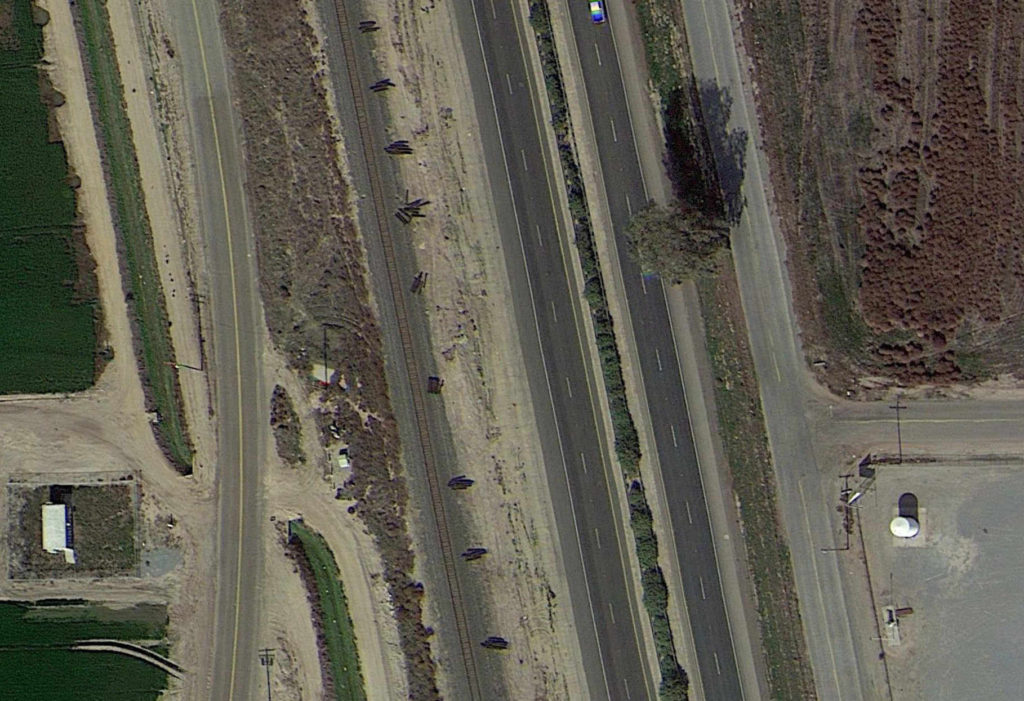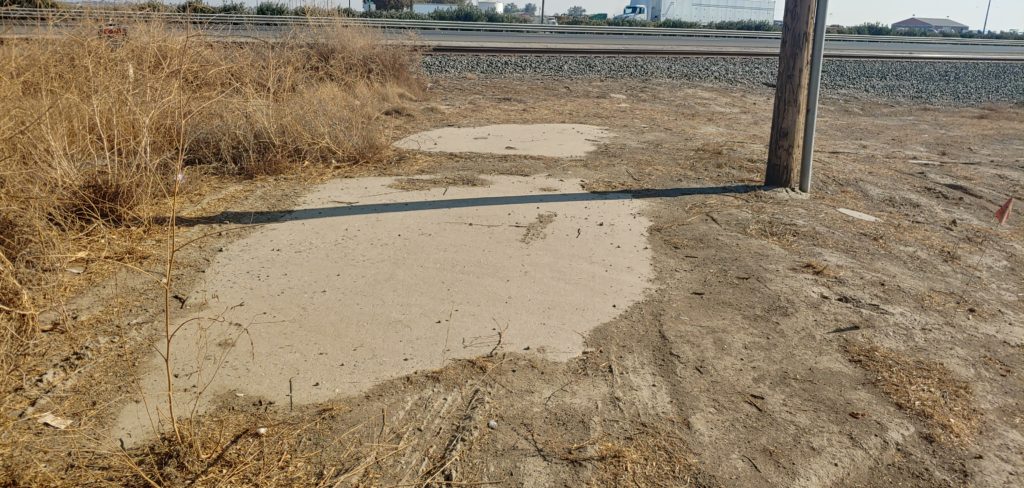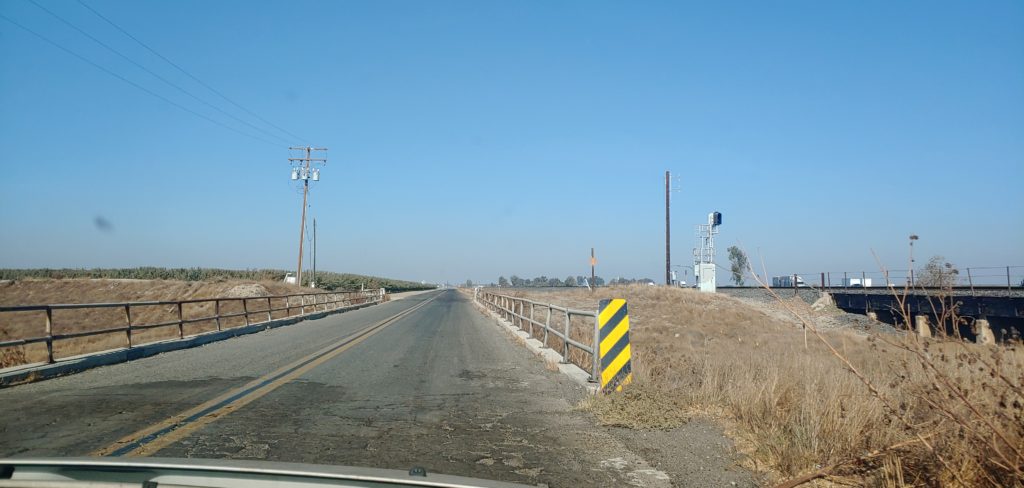There is currently a fire, #RouteFire, burning on the Ridge Route near Templin Highway. I-5 is closed both directions and the Old Ridge Route may be in danger. For information, follow the Twitter feed for the Ridge Route Preservation Organization – @ridgeroute99.
Category: Los Angeles County
September 2021 Newsletter
US 99 in Colton, California
by Michael F Ballard
A small section of original paving, dating to the late 1910’s is still visible near the intersection of Valley Blvd and Pepper Ave. This section of US 99 was realigned in 1935 to create a gentler curve along with a wider roadway. Little remains of the original paving of US 99 through the Los Angeles area, so this is a special section. In 2008, Valley Blvd was realigned again to the north, obliterating a section of the paving.

September Meeting
Join Michael F Ballard and the Historic Highway 99 Association of California for a presentation on the history of US 99 and the Newhall Pass on September 14, 2021 at 6pm via Zoom. The history of the roadway will be covered from the Newhall Tunnel in 1910 to the HOV ramp at the I-5 / State 14 interchange in 2012. Q&A to follow the presentation. Please register using the link below.
https://us06web.zoom.us/meeting/register/tZcrc–rpzIoGdxQYOYkViOpSZQHqw2rEpl1
Featured Website
Jeremy M. Tuggle, born in Redding, is a descendant of 11 pioneer families who settled Shasta County between 1849-1889. Jeremy attended Shasta College and is the author of two published books, Rooted in Shasta County (2003), and A Journey Through Time: Ono and the Bald Hills (2008), as well as various articles on local history. In 2017, Tuggle was awarded a Community Service Award, a prestigious national award for community service in historic preservation, by the Major Pierson B. Reading Chapter of the National Society of the Daughters of the American Revolution. Jeremy is a member of the General Society of Mayflower Descendants in the State of California, and an Eagle Scout.
Tuggle has been employed at the Shasta Historical Society since November of 2009. In his present role as Education & Community Engagement Manager, Jeremy conducts research for the historical society’s programs and events, contributes to the Society’s social media presence, and ensures the highest quality guest and patron experience at the Society’s programs and community events and is available to community organizations to present programs about Shasta County history.
You can follow Jeremy Tuggle at:
https://exploringshastahistory.blogspot.com/
https://www.youtube.com/channel/UCWaOOvqGzR_kkhhgPI5cPRA
Facebook, Instagram, Twitter and Pinterest.
Book of the Month
My name is Mike Herman and I would like to thank Michael Ballard for inviting me to send an article on a book that I have written.
In 2018, I started the Historic Ukiah-Tahoe Highway Assoc in an attempt to inform more people about the history and importance of this 222 mile Historic Highway running from Ukiah to Lake Tahoe. As part of this process, I wrote the Historic Ukiah-Tahoe Highway Travel Guide.
During the research of this project, I discovered another “Forgotten Highway”. In Williams, the Ukiah-Tahoe Highway crosses Old US 99W. After I finished the first Travel Guide, I started another one for Historic US 99W. I am sure that most of you know that US 99 splits into an east and west routes between Sacramento and Red Bluff. US 99W went through the small towns on the west side of the Sacramento Valley. US 99W was replaced in I-5 and is no longer a state or federal highway. Nearly every town along the way has an interesting story or a point of interest that people driving down I-5 will never know.
I provided Michael with an electronic copy of this Travel Guide that any member is welcome to use. If you would like to see the other Books and Travel Guides that we have, visit www.HistoricUSHighways.com
Featured Photo
This section of US 99 in Gorman, California was the last section of the original 1933 Ridge Route Alternate concrete. It was resurfaced in 2010 by Los Angeles County. The concrete was poured on June 8, 1933. It remained a part of US 99 until 1951, when Gorman was bypassed by a new four-lane alignment along what is now the I-5 freeway. Few sections of original three-lane concrete remain these days. Only two exist in Southern California now and both are on US 101 (Carpinteria and Mission Viejo). Always make sure to get your photos while you can. You never know when things might go away or be covered up.
Errata
Starting January 2022, this newsletter will shift to bi-monthly publication. Interim updates and 99 alerts will still be given outside of that schedule.
September 2021 Presentation
Join Michael F Ballard and the Historic Highway 99 Association of California for a presentation on the history of US 99 and the Newhall Pass on September 14, 2021 at 6pm via Zoom. The history of the roadway will be covered from the Newhall Tunnel in 1910 to the HOV ramp at the I-5 / State 14 interchange in 2012. Q&A to follow the presentation. Please register using the link below.
https://us06web.zoom.us/meeting/register/tZcrc–rpzIoGdxQYOYkViOpSZQHqw2rEpl1
August 2021 Newsletter
Original US 99 – Tipton to Tulare
I found an original section of US 99 from Tipton to Tulare that has quite a few interesting features. It had been a while since I looked at maps of this section, as most of my research has concentrated between Los Angeles and Bakersfield. The map below shows the alignment of US 99 in 1926.
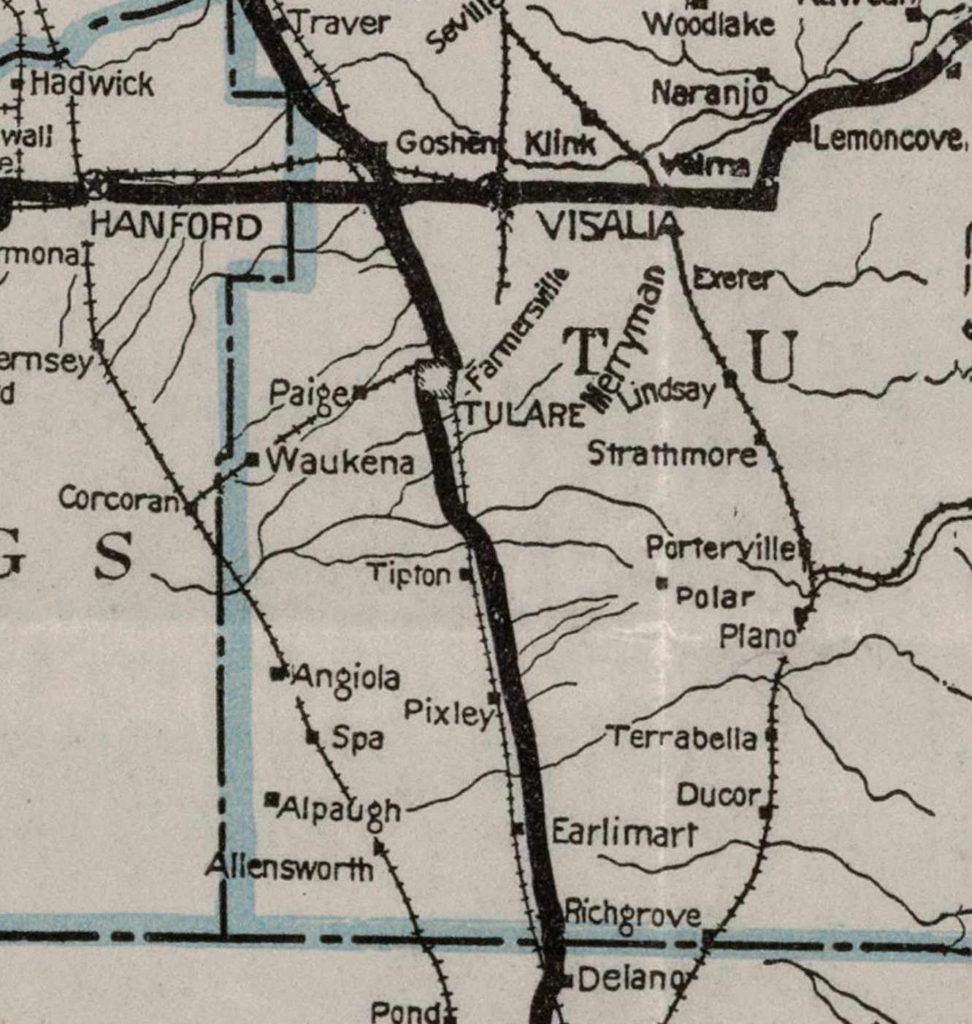
Until 1931, US 99, and by extension Legislative Route 4, went on the west side of the Southern Pacific tracks from current Ave 164 north of Tipton to Bardsley Ave in Tulare, following Tulare County Road 112. This section was most likely paved with a 20′ concrete slab around 1917.
The roadway also retains four original bridges. The two North Branch Tule River bridges (46C-0004 and 46C-0010 respectively) are from 1917 and retain their original pipe railing. Two other bridges, Elk Bayou and Bates Slough are also original, with the former dating to 1916. The telltale cracking of asphalt over concrete is also visible near the northern North Branch Tule River bridge to near Ave 184 at Octol.
The realignment in 1931 eliminated two railroad crossings without the use of bridges at the tracks. The new road was also built a little higher to help ease flooding problems that were common in the Central Valley. Today, some of the bridges built at that time still remain, albeit widened or otherwise modified. In time, we would like to work with Tulare County to get this section of Historic US 99 signed again.
August Meeting
On August 3, 2021 at 6 pm, we will have our first guest speaker. Please join Historian Evan Decker; President of Mentryville, California Inc for a presentation and Q & A on the History of Mentryville, California on August 3rd at 6pm; Hosted by the Historic Highway 99 Association. Mentryville is a historic ghost town known as the site of the “birthplace” of the Oil Industry in California in 1876 with the drilling of California Star Oil No. 4. Q & A to follow.
Register for the meeting using the link below:
https://zoom.us/meeting/register/tJMkd-2hqDoqEty9IHOFgyUWO0ns2_ZKrq_7
For more information:
https://www.mentryvillecalifornia1876.com/
Lake Shasta Water Level Monitoring
As the drought worsens here in California, reservoir levels are continuing to drop. In the case of Lake Shasta, a long section of the original alignment of US 99 is normally submerged below tens of feet of water. This year, the level is expected to get extremely low. Most of US 99 will be fully exposed when the lake hits 900 feet (167 feet below full pool) which is likely sometime this month. You can also follow our Twitter account (@Historic99) to get weekly (Sunday morning) updates.
https://cdec.water.ca.gov/dynamicapp/QueryDaily?s=SHA
Membership and Support
Our membership now extends across all three states US 99 traversed and British Columbia. It seems the word is slowly getting out there. We want to do more, however, and need your support. If you’re not a member already, sign up! Your membership is tax-deductible and your membership fees will go to helping us bring Historic Highway 99 into the spotlight it deserves.
We also still need your help. We are developing brochures and flyers for the Association for distribution. We will need your help with design as well as helping represent the Association throughout California. We’re also looking for ideas for fundraisers and outreach programs. If you’d like to help, contact us! We want to see this Association succeed and it cannot without help from all over.
We do wish to thank all those that have donated so far and signed up for memberships. Your contributions, regardless of size, have been very helpful to our cause.
Sign Design Contest
Interested in helping design a new sign for 99?
We are holding a design contest for a new terminus mileage sign for US 99. US 6 has one in Bishop. US 50 has one in Sacramento. I-40 has one in Barstow. US 99 does not and we intend to change that. Two signs will be placed, one in Calexico, California and the other in Blaine, Washington to commemorate the historic termini of US 99. What we are looking for is a sign that stands out among the others and gives the mileage to each end. For reference, the historic mileage of US 99 was 1499 miles in 1958 per AAA. The sign should contain a US 99 shield, possibly three for each of the states it passed through. We aren’t looking for a large sign as there may be space constraints but certainly a sign 24″ x 36″ or smaller, horizontal or vertical, would be acceptable. At the present time, we are not certain as to when the signs will be posted. All designs must be submitted by August 15, 2021.
The winner will be announced in our September newsletter.
Featured Book
“Freewaytopia: How Freeways Shaped Los Angeles” explores how social, economic, political, and cultural demands created the web of expressways whose very form―futuristic, majestic, and progressive―perfectly exemplifies the City of Angels. From the Arroyo Seco, which began construction during the Great Depression, to the Simi Valley and Century Freeways, which were completed in 1993, author Paul Haddad provides an entertaining and engaging history of the 527 miles of road that comprise the Los Angeles freeway system.
Each of Los Angeles’s twelve freeways receives its own chapter, and these are supplemented by “Off-Ramps”―sidebars that dish out pithy factoids about Botts’ Dots, SigAlerts, and all matter of freeway lexicon, such as why Southern Californians are the only people in the country who place the word “the” in front of their interstates, as in “the 5,” or “the 101.”
Freewaytopia also explores those routes that never saw the light of day. Imagine superhighways burrowing through Laurel Canyon, tunneling under the Hollywood Sign, or spanning the waters of Santa Monica Bay. With a few more legislative strokes of the pen, you wouldn’t have to imagine them―they’d already exist.
Haddad notably gives voice to those individuals whose lives were inextricably connected―for better or worse―to the city’s freeways: The hundreds of thousands of mostly minority and lower-class residents who protested against their displacement as a result of eminent domain. Women engineers who excelled in a man’s field. Elected officials who helped further freeways . . . or stop them dead in their tracks. And he pays tribute to the corps of civic and state highway employees whose collective vision, expertise, and dedication created not just the most famous freeway network in the world, but feats of engineering that, at their best, achieve architectural poetry.
Finally, let’s not forget the beauty queens―no freeway in Los Angeles ever opened without their royal presence.
Featured Image
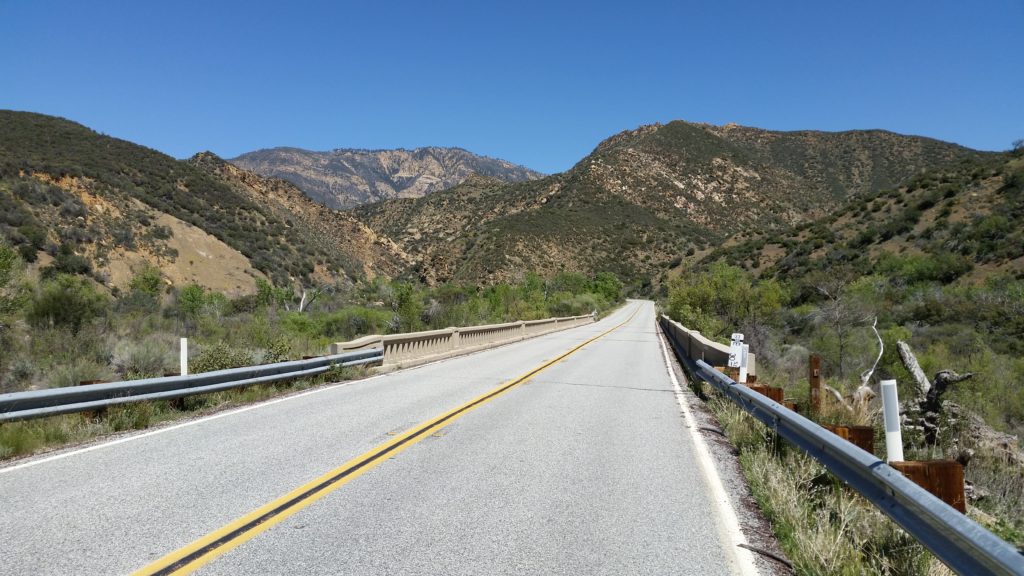
Errata
Would you like to write an article for our newsletter? Contact us for details.
Ridge Route Alternate Presentation
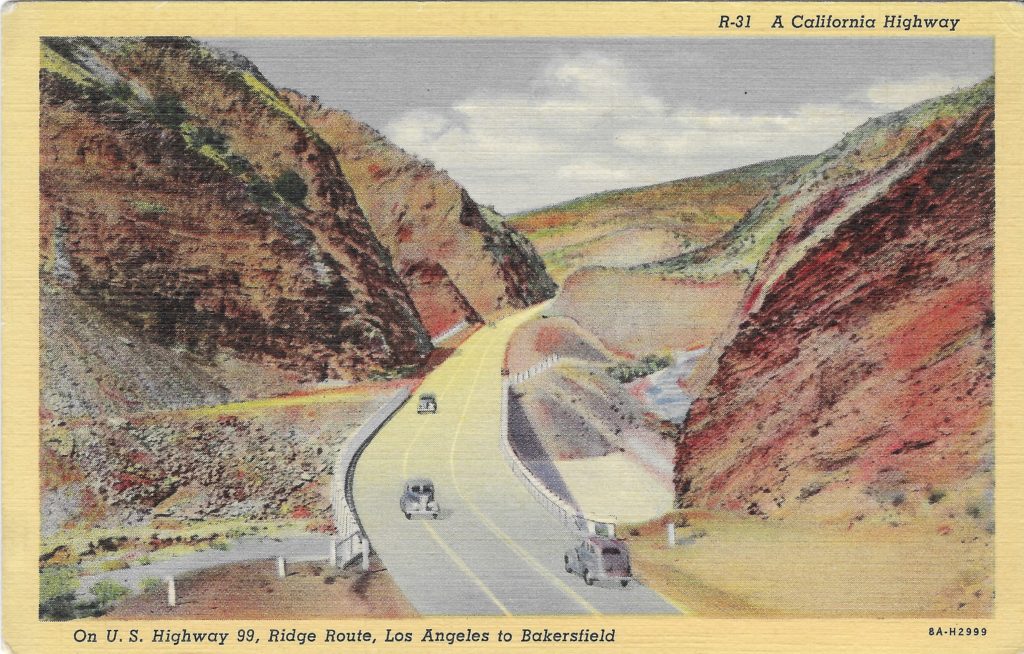
On Tuesday, April 6 at 6pm, Michael Ballard will be giving a presentation via Zoom on the Ridge Route Alternate section of US 99 during our regular monthly meeting. It will cover the history of the roadway from its original construction through to its replacement by I-5 from Castaic to Tejon Pass. The presentation will include some rarer photos of the route and have time at the end for questions. Come join us and learn a bit about the history of US 99 in Southern California!
To register for the presentation, use the link below:
https://zoom.us/meeting/register/tJwlf-6srDIqHdRkYBHsG8jzi8D68Gtys-dF

